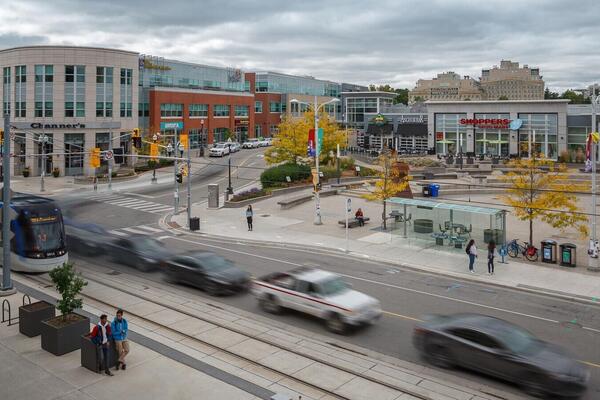
Waterloo quantum tech launches into space aboard SpaceX flight
Institute for Quantum Computing-made photon detector will find a new home on the International Space Station

Institute for Quantum Computing-made photon detector will find a new home on the International Space Station
By Naomi Grosman Institute for Quantum ComputingA photon detector module designed, assembled and programmed at University of Waterloo’s Institute for Quantum Computing (IQC) launched into space earlier this week aboard a SpaceX flight and will soon arrive at the International Space Station. It will be used for quantum entanglement science experiments as part of the Space Entanglement and Annealing Quantum Experiment (SEAQUE) implemented by an international consortium under leadership from the University of Illinois Urbana-Champaign.
A new telecommunications network is needed to harness the potential of quantum mechanics, which supports the creation of quantum computers and could enable unbreakable encryption. Quantum telecommunications relies on transmitting light signals on the level of individual photons, with satellite nodes being required for long-distance communication.
To test and validate satellites equipped with technology that underpins quantum communications, researchers from IQC partnered with the University of Illinois Urbana-Champaign, the Jet Propulsion Laboratory, ADVR Inc., Boeing and the National University of Singapore to implement the SEAQUE mission. The mission’s system includes a source of entangled photon pairs, single-photon detectors and lasers that allow the detectors to be laser-healed from the harsh elements of outer space.

Dr. Thomas Jennewein, IQC affiliate and professor in the University of Waterloo’s Department of Physics and Astronomy.
“It will be very exciting to follow the results from the SEAQUE experiments conducted in space. We know from lab tests that laser annealing of radiated detectors is very effective, but the space environment brings some interesting challenges due to the high laser powers. The SEAQUE mission will be the first to verify this method on a device with small size and power, in the context of quantum entanglement experiments.” says Dr. Thomas Jennewein, IQC affiliate and professor in Waterloo’s Department of Physics and Astronomy. He leads the Quantum Photonics lab at IQC, which designed and implemented the module.
“If we’re going to build a whole new communications network with hundreds or thousands of satellite units, we need to make sure that the base model is functional,” says Paul Godin, IQC’s senior technologist at the Quantum Photonics lab.
Jennewein and Godin worked with four other scientists, Nigar Sultana (PhD ’19), Nouralhoda Bayat (BSc ’22), Joanna Krynski (MSc ’22) and Zhenwen Wang over the last three years to build the module. The project included building four single-photon detectors, multi-channel coincidence detection as well as a microcontroller for operation and photon counting, all in a very compact format.
The device will stay 400 kilometres above Earth on the International Space Station for up to a year.
“This mission will confirm how a photon detector behaves in space, how fast it degrades and how many times the detector can be annealed,” Godin says. “A lot of these questions are still unanswered and that’s what the SEAQUE mission is investigating.”
He adds that it’s rare to test quantum technology in space. But to reach the long-term goal of a quantum communication network, it’s necessary to prove that the technology, even on a small scale, works in space. And the more space experiments, the better.
“Historically, a lot of things have been built for space missions later end up helping a lot of technological aspects on earth,” Godin says. “Like the rising tides that lift all boats, the more we invest in space the better things get down here on Earth.”
The Waterloo team acknowledges funding from the Canadian Space Agency (FAST program) which supports their work at IQC. Jennewein says this project is in line with CSA’s push to advance technologies for future quantum communication satellites.

Read more
It Started in Waterloo: An Astronaut's Journey into the Universe of Innovation, narrated by Chris Hadfield, highlights the University of Waterloo’s role in igniting innovation within the region and beyond.

Read more
New leadership to accelerate growth and global engagement

Read more
Discover how Waterloo alumni are driving Canada’s economy with five tech companies making a local and global impact
The University of Waterloo acknowledges that much of our work takes place on the traditional territory of the Neutral, Anishinaabeg, and Haudenosaunee peoples. Our main campus is situated on the Haldimand Tract, the land granted to the Six Nations that includes six miles on each side of the Grand River. Our active work toward reconciliation takes place across our campuses through research, learning, teaching, and community building, and is co-ordinated within the Office of Indigenous Relations.